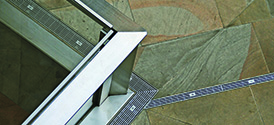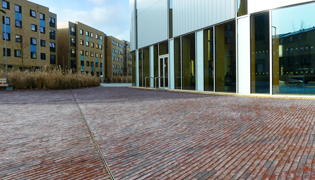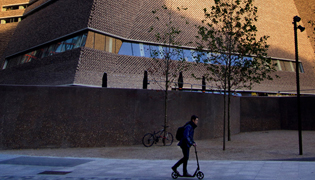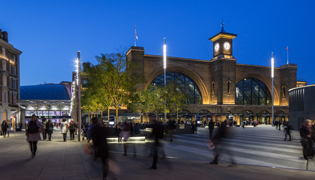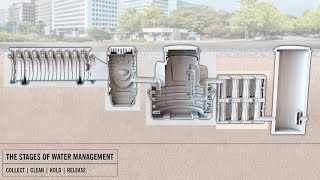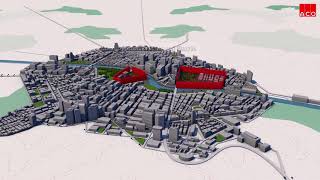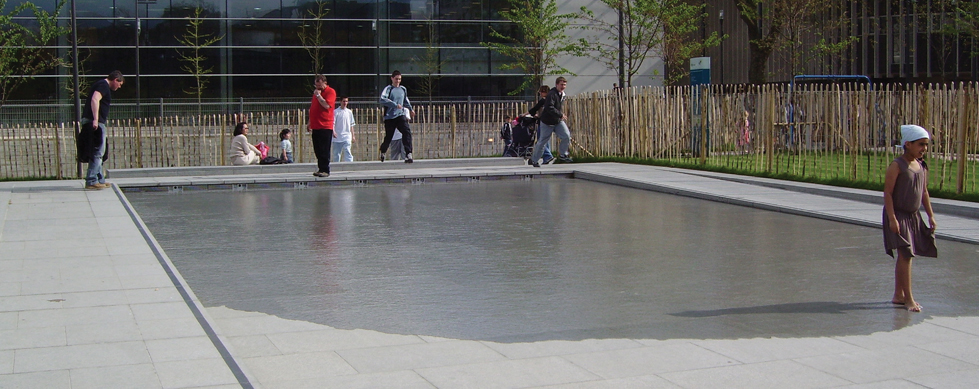
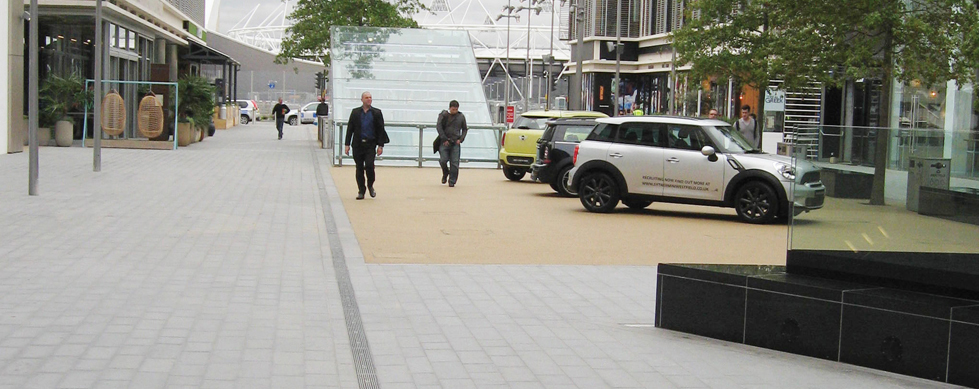
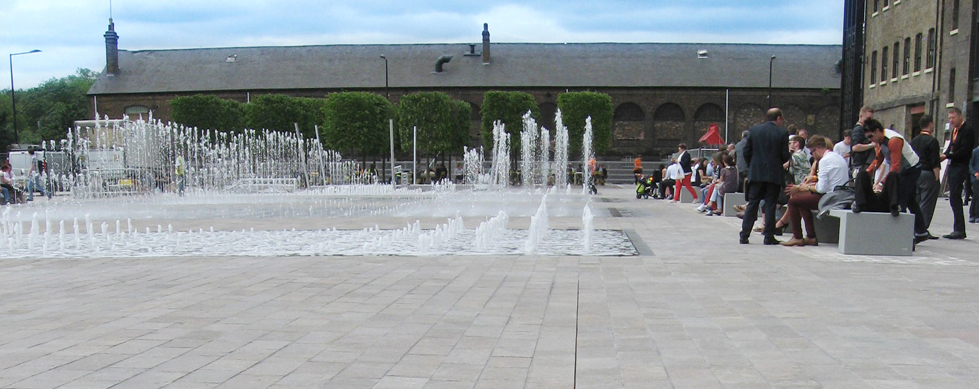
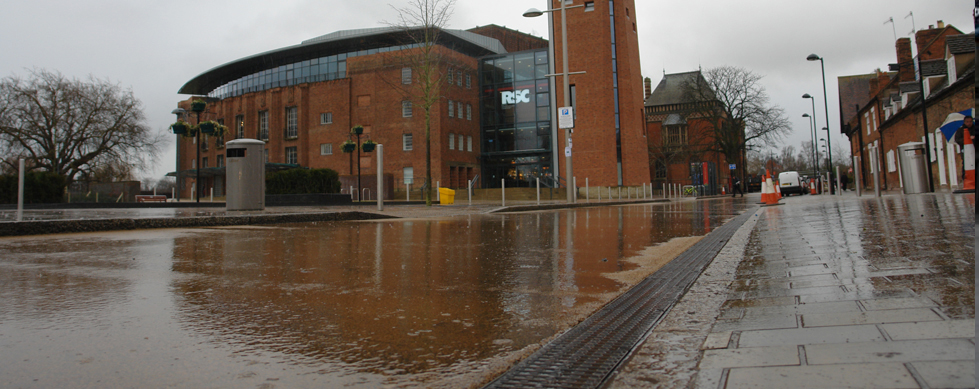
Urban surface design
Designing for urban environments
Frequently urban design is defined as 'the design of the spaces between buildings', distinguishing it from the design of buildings. ACO recognise that to a significant extent the characteristics of the spaces between buildings are determined by the buildings themselves, however the specific detail involved in the design of these spaces can have a dramatic impact on wellbeing, work and lifestyle.
Increasing legislative and planning focus on the management of water in all environments means that removal of water and the utilisation of water as an amenity has demanded, and given the opportunity, for greater involvement form urban designers of all disciplines.
ACO’s approach to working with landscape architects, urban designers and master planning is based on core drivers of sustainability, exceptional design and a flair for innovation – reflected in many projects across the world.
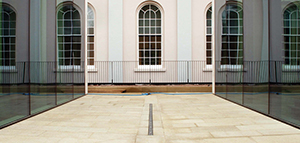
Buildings
Buildings are typically the most distinct component of urban design as they shape and form space by creating defined lines. ACO drainage solutions are specifically designed to work as part of the building envelope or within and around the specific confines of a premise’s curtilage to manage rainwater.
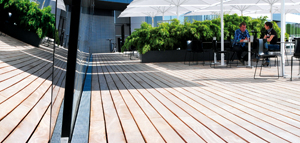
Terrace and facade
Terrace and Facade drainage present specific challenges to specifiers; dealing with areas including roof gardens, roof terraces, level thresholds and façade, requiring aesthetic considerations at ingress points while enabling safe access and preventing water ingress into a building.
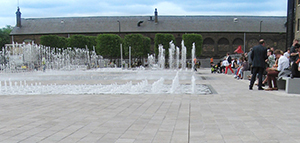
Urban squares + plazas
Plazas and urban squares have been argued to be the most important area of city design. It is these areas that create the setting for public and commercial buildings in our cities.
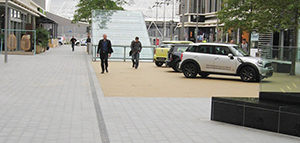
Shopping precincts
Precincts have many design requirements in common with other urban areas, however they also have their own specific challenges. Designed to cater for the different preferences of shoppers for both environment and linkage between shopping areas they will frequently include both enclosed areas and spaces open to the elements.
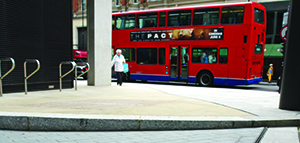
Streets
Urban streets are used for a wide variety of activities, walking, cycling, driving, trading, meeting and socialising and it is therefore no surprise that streets comprise more than 80% of public space in cities.
Commercial streets, residential streets, shopping boulevards or main transit corridors all need to be sensitive to the multifaceted role streets play.
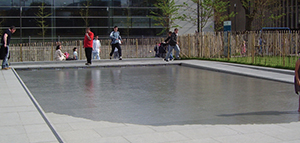
Landscape, parks + amenity
An increasingly sensitive and important area for the urban environment is the “green space” – in many ways a foundational part of green infrastructure (GI).
Green space provides a break from the prevailing hardscape that is prevalent in urban environments and has become an essential element of public health policy.
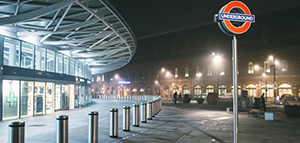
Transport
Urban environments, by necessity, feature significant numbers of transport interchanges. Increasingly designs are moving from single hubs to integrated nodes that linking different transportation systems and incorporate other facilities such as food outlets and shopping.
As the global population grows, it is becoming increasingly urbanised, bringing with it the critical issues relating to resilience capacity in those increasingly stressed environments. Managing water in our towns and cities is no longer about simply getting water away as soon as possible: there are multiple facets to consider, from durability and change of use to amenity and ecology.
ACO works closely with landscape architects, ecologists, planners and designers in helping create integrated urban drainage solutions. As a consequence of the detailed attention to a wide range of product performance criteria and the related interfaces over many years, ACO can provide world-leading design features for planners and designers of surface water management in our urban environments.
Designed for the surface
The aesthetic aspect of drainage design should always be considered carefully, typically to either reduce the visibility or to utilize specific features to enhance appearance of the landscape. For many years ACO Channel drainage systems have been a key tool in addressing urban drainage and the ACO channel gratings have become ubiquitous across the world as part of surface design.
Early systems featured what might now be described as ‘standard’ gratings – normally of a very functional design based on traffic loading. Over recent years the gratings have become much more sophisticated in performance and in appearance. No longer is it only available in ‘cast iron’ with one pattern, instead there are a wide variety of materials and numerous options for enhancing surface design. All of this accompanied by advancements in the underlying channel technologies.
The design of all ACO channel elements that interface with the surface are sophisticated, accommodating a very wide variety of factors including aesthetics, surface finish, load performance, durability and hydraulic demands.
Our Design Team
Collaboration is very much a part of ACO’s way of working. For over 50 years we have been offering creative design solutions to all sectors of government, public and private enterprise and have a track record for development and regeneration informed by community aspirations and environmental context. Our in house design team and our external design engineers have excellent technical understanding of interconnected systems that can help you create sustainable drainage solutions in all categories of the urban environment.
Tools to support you
We also offer software for design surface to assist you in making your own calculations, as well as design visualisers to assist in helping assess impact of various grating/inlet details. BIM product files along with a variety of other support documents are all available for download here.
